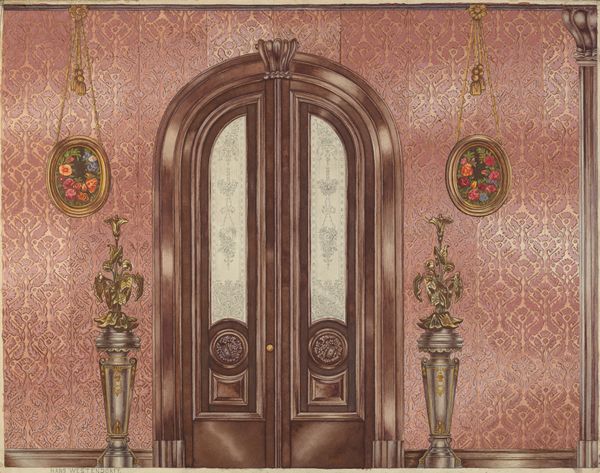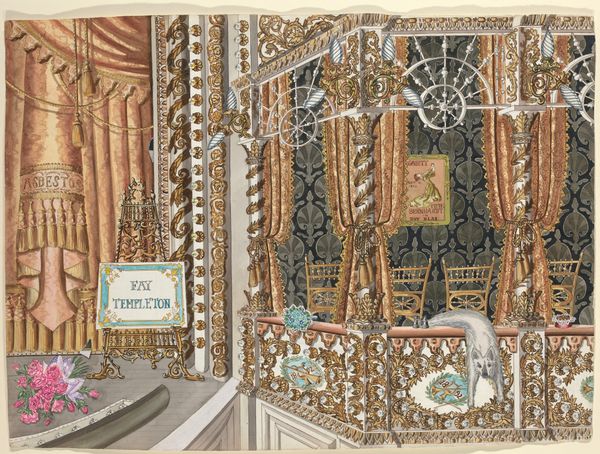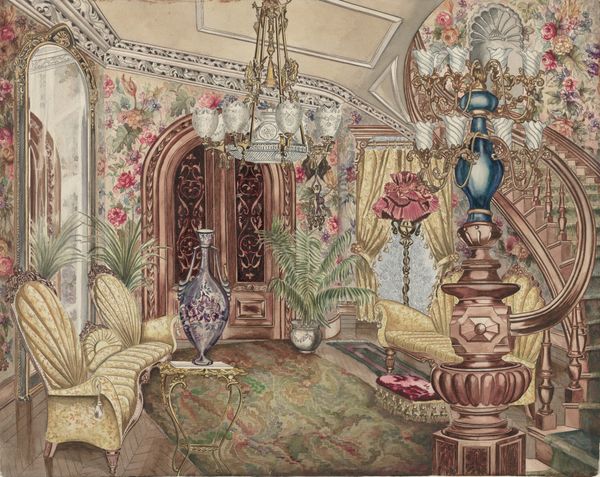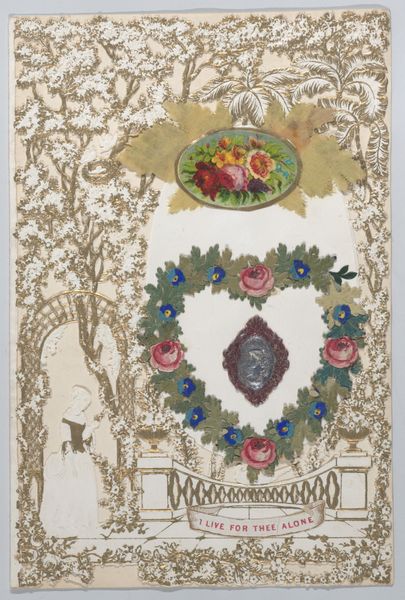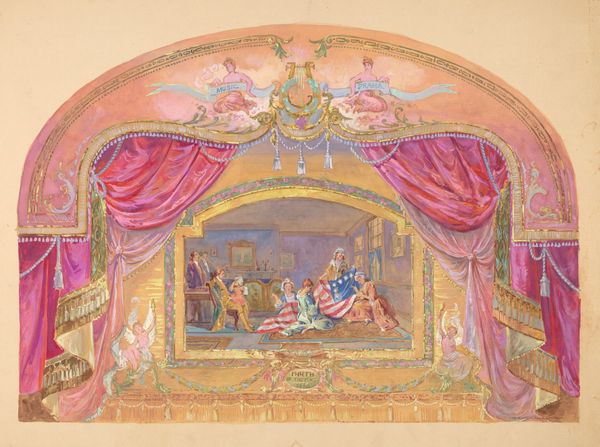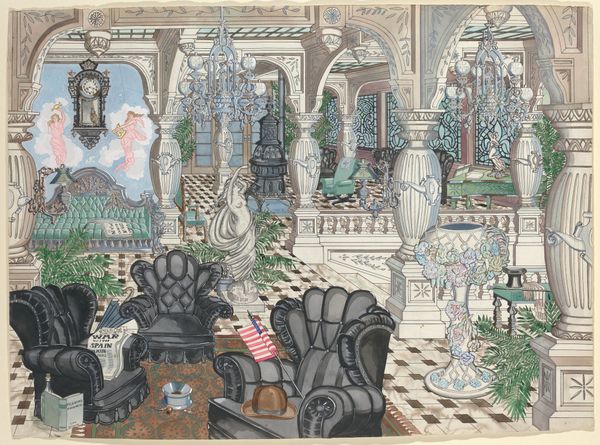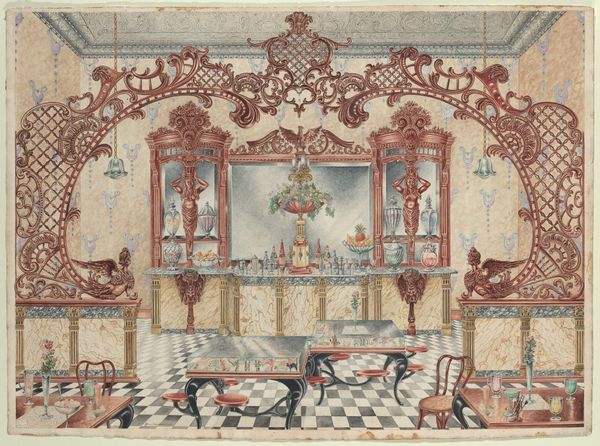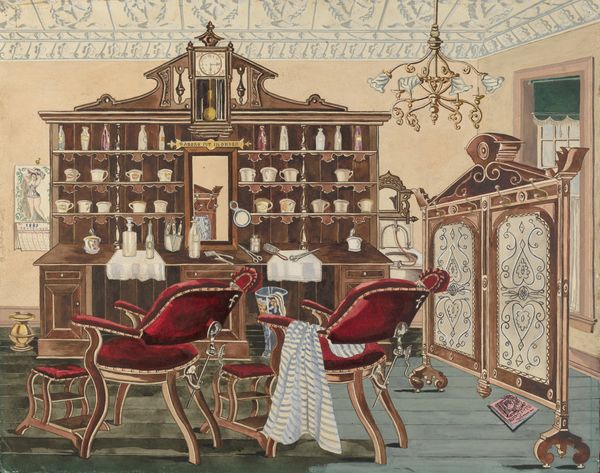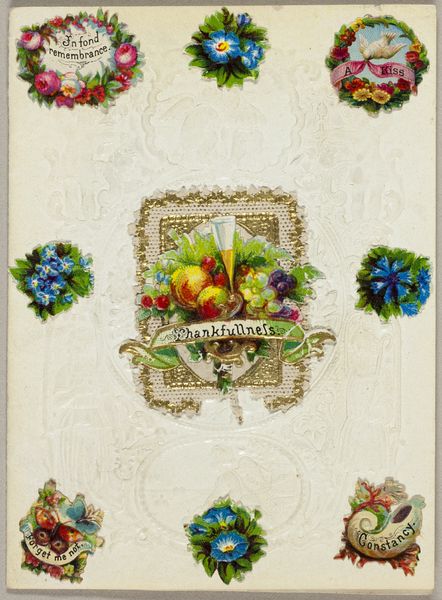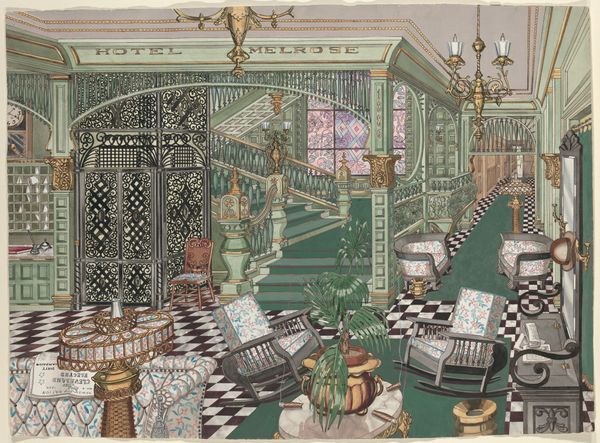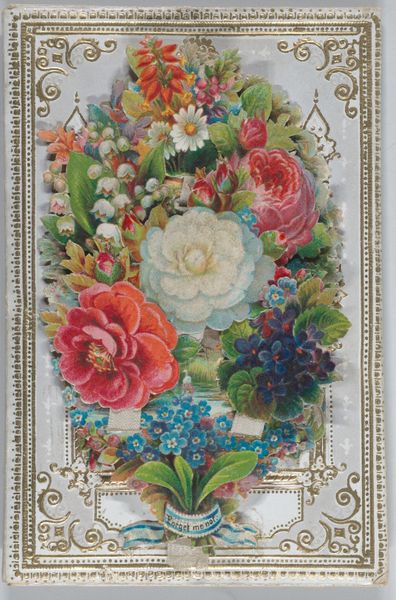
drawing, coloured-pencil, watercolor
#
drawing
#
coloured-pencil
#
water colours
#
watercolor
#
coloured pencil
#
watercolor
Dimensions: overall: 45.6 x 56.7 cm (17 15/16 x 22 5/16 in.)
Copyright: National Gallery of Art: CC0 1.0
Curator: This drawing, called "Conservatory Window with Flowers," comes to us from Perkins Harnly, created sometime between 1935 and 1942 using colored pencil and watercolor. Editor: My first thought is: what a charming, if somewhat artificial, idyll! It evokes a sense of being "proper" and quaint with its slightly theatrical display of flora, framed by rather stiff decor. Curator: The arrangement does appear staged. This was a period when artists were influenced by regionalism and social realism, often turning their eye towards depictions of American domestic life, albeit through their individual filters. Perhaps Harnly sought to portray the aspiration toward middle-class respectability in an idealized manner. Editor: Look at the symbolism. The flowers—life, beauty, fleeting moments of joy. Yet they're all contained, potted, managed within the confines of domestic space. Consider those portraits hanging on the walls, archetypes of establishment. It almost hints at the societal pressures placed upon the occupants. Curator: Fascinating. I’d add that the prevalence of the conservatory itself suggests something about the public image the occupants would want to project. It elevates the home, providing almost a stage for personal expression, indicative of a specific social ambition that prevailed during the Depression Era. Editor: The paired chairs sitting like props at stage left and right give me a feeling of longing or waiting, while that array of floral forms ascending toward the window symbolizes aspiration toward… what exactly? Transcendence? Freedom? Perhaps the light of social acceptance? Curator: Those are astute observations! Considering that Harnly himself led a relatively unconventional lifestyle during a less accepting era, perhaps this image represents an idealized yet somewhat constrained existence—a commentary on social expectations that were difficult to escape during this period. Editor: It's interesting how Harnly manages to embed all those cultural undercurrents beneath the delicate veneer of this floral scene, almost like pressing flowers in the pages of social history. Curator: Yes, indeed. And I’m reminded of how art can serve as both a mirror reflecting social norms and a window hinting at unspoken narratives.
Comments
No comments
Be the first to comment and join the conversation on the ultimate creative platform.
